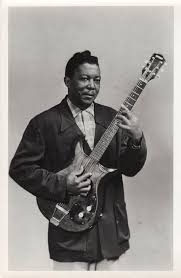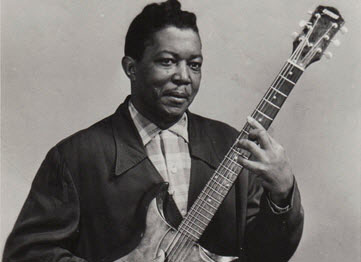Robert Nighthawk was a pivotal figure in the development of the blues, particularly in the Delta and Chicago blues styles. Despite not gaining as much mainstream fame as some of his contemporaries, his influence on blues music and guitarists who followed is undeniable. Here are five intriguing curiosities about this legendary musician:
1. He Had Multiple Stage Names
Born Robert Lee McCollum in 1909, Nighthawk performed under several names throughout his career. Early in his career, he was known as Robert Lee McCoy when recording for Bluebird Records. Later, he adopted the stage name Robert Nighthawk, inspired by one of his early recordings, Prowling Night-Hawk (1937). This change helped him establish a fresh identity as he transitioned into the Chicago blues scene.
2. He Was a Pioneer of the Slide Guitar in Electric Blues
Nighthawk’s slide guitar work was highly influential, particularly in the realm of electric blues. His fluid, melodic slide technique and powerful phrasing set him apart from many of his contemporaries. His style greatly influenced future blues legends like Muddy Waters and Earl Hooker. His signature sound can be heard on tracks like Sweet Black Angel and Anna Lee.
3. He Had a Nomadic Lifestyle
Unlike many blues musicians who settled in major cities like Chicago, Nighthawk never stayed in one place for too long. He was known for his constant traveling, playing in juke joints and on street corners across the Mississippi Delta and beyond. This restless spirit led to an inconsistent recording career, as he was often hard to locate when record labels wanted to sign him for new sessions.
4. He Had a Short Stint as a Radio Star
Despite his itinerant lifestyle, Nighthawk had a brief but impactful presence on the radio. During the 1940s, he hosted a blues radio show on KFFA in Helena, Arkansas, a station that also broadcasted King Biscuit Time, which featured Sonny Boy Williamson II. His radio presence helped bring his music to a broader audience and solidified his reputation as a master of the blues.
5. He Made a Remarkable Comeback in the 1960s
After fading from the spotlight in the 1950s, Nighthawk was rediscovered in the 1960s during the blues revival movement. He was recorded performing on Maxwell Street in Chicago, and these recordings, such as Live on Maxwell Street 1964, remain some of the most cherished examples of his raw and powerful blues style. This period helped introduce him to a new generation of blues enthusiasts.
Conclusion
Robert Nighthawk may not have achieved the fame of some of his peers, but his impact on blues music is undeniable. From his pioneering slide guitar techniques to his radio presence and restless lifestyle, he remains an essential figure in blues history. His music continues to inspire musicians and blues fans alike, proving that his legacy is as enduring as the blues itself.


Comments are closed